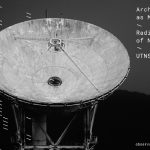Week 2: 1/31
To better understand the very nature of observation each participant will focus on a single object to ground an investigation. We will use the coming two weeks to identify these. To really see an object, argues Ben Highmore (2011) in his book “Ordinary lives: Studies in the everyday”, we need not only to take the time to notice it, but also realize that objects extend far beyond us humans. They are not simply their use value, the conceptual categories we fit them into, or feelings and memories we project onto them. We need to train our senses to listen to something beyond ourselves, namely, “the thingly world”:
“I start out by noticing a chair that most of the time (and especially when I am sitting in it) I fail to notice. The thingly world, I argue, is neither most usefully explained through the optic of cultural symbolism (what the chair stands for, what cultural values it embodies) nor through the sense that an ‘owner’ makes objects significant by investing them (and infesting them) with their own meanings … Symbolism and investment will be part of the story but I hope too that my chair, from its own thingly perspective, will get something of a look in”. (Highmore, 2011, p. 59)
Case Study Exchange
In an email, send the the name of the researcher you introduced in class and one related URL to Selena and Pascal. Add a single sentence that describes an example of the researcher’s practice of observation (or aspects of it). For example:
“They combine senses and data to experience the natural world”.
“The observational process includes optical instruments ranging from a simple lens to modern microscopes”.
“They observe color ranges to describe different kind of urban communities”.
(Luke)
Philip Levine, poet who observes the emergence of the sacred from within the mundane. He is particularly attentive to the factory rituals he encountered as a child in late-industrial Detroit. These rituals are remembered and sacralized in elegiac works that reveal the overlap and friction of specificity compressed into poetic line; meaning emerges through the relationship between initial observation and phenomenon-as-metaphor.
Coming Close
(Eileen)
Anne Lamott, author of Bird by Bird (and many other things)
She draws on personal experience and memory and begins by writing down as much as you can see through a “one-inch picture frame” (one scene, one memory, one exchange).
12 truth I learned from life and writing (TED talk)
(Rae)
Anonymous Craigslist Poster, author of “We were married for three days in 1989, and I saw you on the subway” – m4w, January 23rd. 2014
Thinking about desires for romance/personal attempts at connection as research – I think this researcher is one of the best in their field because their post is detailed and silly and sad and happened on a train that I take sometimes.
https://www.craigslist.org/about/best/nyc/4301059953.html
(Natalie)
Leroy Hood, American Biologist. As an 80 year old man, he’s still vigorously observing his topic of research. his coming to the end of life, I believe, must be his fear that he’s tackling. While also making major advancements in the health sector by coming up with these new ways to cure unseen diagnoses.
Article about Leroy Hood on Sciencemag.com
(Juliana)
Anna Deveare Smith, performer, playwright and professor. She observes people through long-form interviews and “occupying” their words in verbatim theater pieces.
(Alexandra)
Jean Painlevé, photo and videographer. He creates pieces through dreamy scientific observations.
jeanpainleve.org/films
For next week
(3 objects/ 1 method) Choose three possible “objects” of study (concrete thing to be observed/ manifestation of your research interest). Spend 30 minutes observing each of these. Record what you observed. (Beginning of observation archive)
Bring at least one or all three objects to class next week.
Readings
1. Baudrillard, Jean. The systems of collecting. In The cultures of collecting. (1994). (Cardinal, Roger & Elsner, John, Editors). London: Reaktion Books.
2. Norman, Donald A. (2005). Three Levels of Design: Visceral, Behavioral, and Reflective. (Pages 63-98). Emotional Design: why we love (or hate) everyday things. New York: Basic Books.
3. Woodward, S (2015) Object interviews, material imaginings and ‘unsettling’ methods: interdisciplinary approaches to understanding materials and material culture. Qual. Res. 2016; 16: 359–374
Featured Photo by Namroud Gorguis on Unsplash





Comments by Pascal